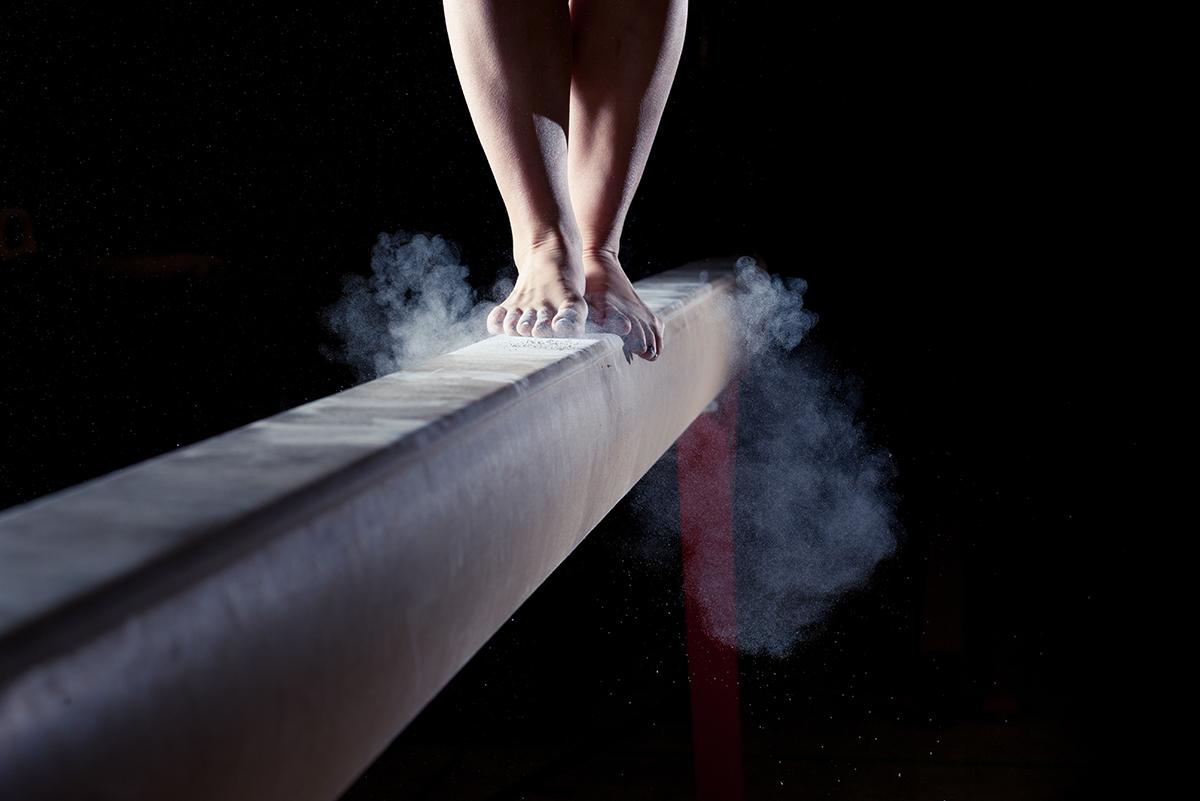DU Gymnast Presents Research on Achilles Tendon Impact During Jumps

Jessica Hutchinson never thought of herself as “a research person.”
She’d been an excellent student. While competing for University of Denver gymnastics, she’d been selected three times to the Women’s Collegiate Gymnastics Association (WCGA) Scholastic All-American team. Still, it wasn’t until she needed a class to satisfy her kinesiology and sports science minor and nothing fit her schedule that she waded into the world of research. She was encouraged by the program’s director, Brian Gearity, to pursue independent research credits to help close the gap, and Hutchinson was able to find something that aligned with her largest passion.
There was an ongoing study led by Michelle Sabick, dean of the Ritchie School of Engineering and Computer Science, centered around the DU gymnastics team and the impact of the sport on the Achilles tendon. Because Hutchinson didn’t know how to code, nor did she have any previous research experience, she was supplied with existing force platform data—the readouts of when a gymnastic slams down on a pressure pad—and she was guided through the process of setting up a literature review and combing through the prior research.
Then, Hutchinson taught herself to code using YouTube videos and trial and error. By the end of the winter quarter in 2022, the gymnast had taken the force platform data and correlated it to performance—who made it into the lineup and the score they received.
Hutchinson was encouraged to submit her work, and she was eventually selected to present her abstract, called "Lower Extremity Ground Reaction Forces in Countermovement Jumps on Gymnastics Performance," at the Rocky Mountain American Society of Biomechanics’ annual conference in the spring of 2023.
“Going in, I really had no idea what was going on,” Hutchinson says. “It was just a ton of data. But it was good that at least what I was looking at was familiar to me, and the season prior to me starting on this research, we’d had several Achilles injuries on the team. It was something that was going on across the NCAA, in general. So, it just felt very relevant for the time, and it was really cool to start digging deep into everything.
“It sounds weird, but I never really realized how much data you could get from a single jump. I remember going into the weight room with my team to do those jumps, and it’s crazy how much information came from that. It was really cool being able to go through that.”
For her senior year, Hutchinson was asked to fully join the research team of the Achilles study, further contextualizing the data she tied to gymnastics performance and success. It was an exciting moment for the physiology in health and disease major, who says she didn’t realize she was “a huge numbers geek” until she started analyzing the data for the study. She also credited DU strength and performance coach Hayli Yetter for being an invaluable help in poring over the data.
While it’s still too early to draw conclusive results from the study, Hutchinson says she’s fascinated by its potential applications to the way athletes—not just gymnasts—train and how potential risk factors can heighten the chance of an Achilles rupturing, a catastrophic injury for athletes.
“I think it’s great that there are things we can look out for and things that we can focus on ahead of time that could potentially prevent further injury,” she says. “I feel like that’s valuable to any athlete, not only gymnasts.”
The two-time Big 12 Gymnast of the Year (2022, 2023) says she plans to go into nursing after her time at DU and that this research work helped open her eyes to specific specialties she might want to pursue in the future.
“There are so many options with nursing,” she says. “This has really broadened my range while allowing me to focus on something I’m really passionate about.”







